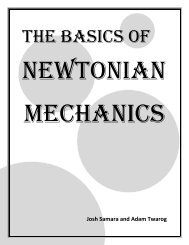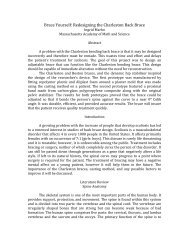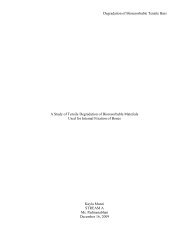Art Forgeries and Their Detection - the Scientia Review
Art Forgeries and Their Detection - the Scientia Review
Art Forgeries and Their Detection - the Scientia Review
You also want an ePaper? Increase the reach of your titles
YUMPU automatically turns print PDFs into web optimized ePapers that Google loves.
Thermoluminescence<br />
The technique known as <strong>the</strong>rmoluminescence is used<br />
to detect pottery forgeries. The process is fairly easy<br />
to underst<strong>and</strong>. Heat is applied to pottery <strong>and</strong> that<br />
causes it to produce <strong>the</strong>rmoluminescence, which is<br />
just light. The older <strong>the</strong> piece of pottery, <strong>the</strong> more<br />
<strong>the</strong>rmoluminescence it produces. In general <strong>the</strong><br />
amount of luminescence is directly proportional to <strong>the</strong><br />
original amount of radiation in an object. So any art-<br />
work that was claimed to have come from awhile ago<br />
could be subject to <strong>the</strong> testing if <strong>the</strong>re had been it had<br />
been exposed to any radiation previously.<br />
be made.<br />
Did You<br />
Know?<br />
● The formula<br />
used to determine<br />
<strong>the</strong><br />
age of an<br />
object is <strong>the</strong><br />
subsequentlyaccumulated<br />
does of ambient<br />
radia-<br />
A Chinese burial guard dog<br />
that was certified by Dr. M.Y.<br />
Tso of Hong Kong Univeristy<br />
to be from <strong>the</strong> Han Dynasty<br />
<strong>and</strong> about 1868 years old.

















